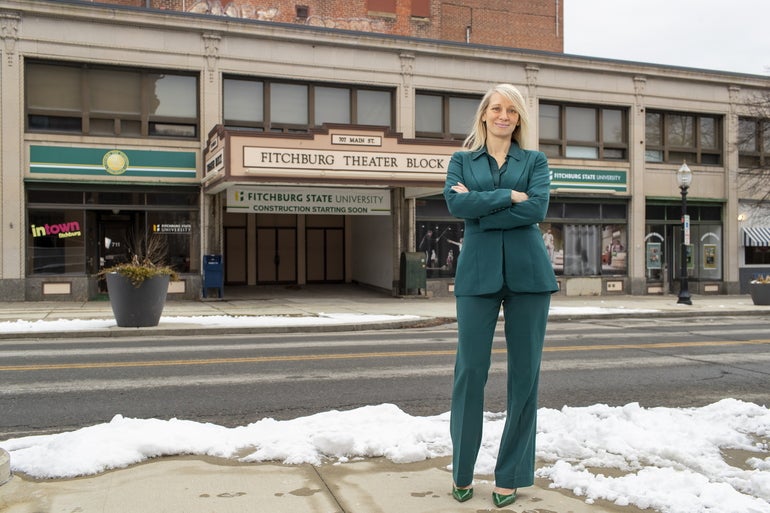Fitchburg began its first intentional effort to revitalize its core back in 2001.
Get Instant Access to This Article
Subscribe to Worcester Business Journal and get immediate access to all of our subscriber-only content and much more.
- Critical Central Massachusetts business news updated daily.
- Immediate access to all subscriber-only content on our website.
- Bi-weekly print or digital editions of our award-winning publication.
- Special bonus issues like the WBJ Book of Lists.
- Exclusive ticket prize draws for our in-person events.
Click here to purchase a paywall bypass link for this article.
Fitchburg began its first intentional effort to revitalize its core back in 2001, with the release of the Downtown Urban Revitalization and Development Plan. Set to guide the area’s redevelopment for the next 20 years, the plan has since been updated nine times, most recently in January 2022.
The latest updates outline several goals, including turning downtown into an 18-hour mixed-use district, improving the downtown business environment, and improving pedestrian and cycling infrastructure.
Since the latest update, two positions key to the process have seen new faces, as Sam Squailia was elected mayor of Fitchburg in November 2023 and Donna Hodge was named president of Fitchburg State University in June.
The now 24-year-long effort has shown that undoing decades worth of urban decline can’t happen overnight. Far from it. But with two new leaders in key positions to shape the process, City officials and business owners are looking to the next chapter.
“With the Fitchburg State University theater project, artist-preference housing, the multitude of diversity of restaurants and entrepreneurs that we have downtown, I think downtown is coming together nicely,” said Squailia. “We’re seeing that snowball effect.”
Top priorities for new president
A revitalized downtown has the potential to strengthen the symbiotic relationship between downtown and Fitchburg State, and embracing FSU’s downtown presence is one of the objectives outlined in the most recent amendment to the revitalization plan.
Once bustling, the decline of industry and suburban sprawl resulted in Fitchburg’s downtown suffering the same fate of countless manufacturing-focused communities in New England, according to the 2001 FRA revitalization plan. During the worst periods of urban decay, then-Fitchburg State College had seen the downtown area as a liability and expanded its campus in the opposite direction, but the decades since have seen the school establish a presence in the city’s urban core.
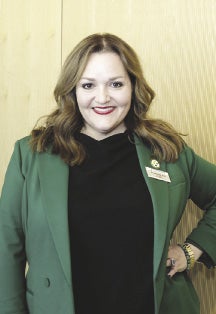
“President Hodge is going to be fantastic for Fitchburg,” Squailia said. “She uses a lot of words like community and collaboration and connection. That's really what we need with both Fitchburg State University and the City of Fitchburg, because we rise together. I think she gets that, and she is just very engaging, full of energy, and not afraid to make changes.”
A reminder of Fitchburg State’s downtown presence sits directly across the street from city hall with the Fitchburg Theater Block, a 25,713-square-foot building containing retail storefronts, the university’s game design studio, and a long-empty 1,500-seat theater.
“Since our purchase of the abandoned building in 2016, the university has invested millions of dollars into the theater block, including the studio that serves advanced game design students completing their capstone courses,” Hodge wrote in an email to WBJ. “Having the studio downtown lets students work more independently, and on schedules that work for their needs, and also integrates them into the city.”
Fitchburg State is spending nearly $10 million to shore up the building's roof and envelope this winter. Now pivoting away from the idea of bringing back the theater use, the school is working to figure out how to best use the space.
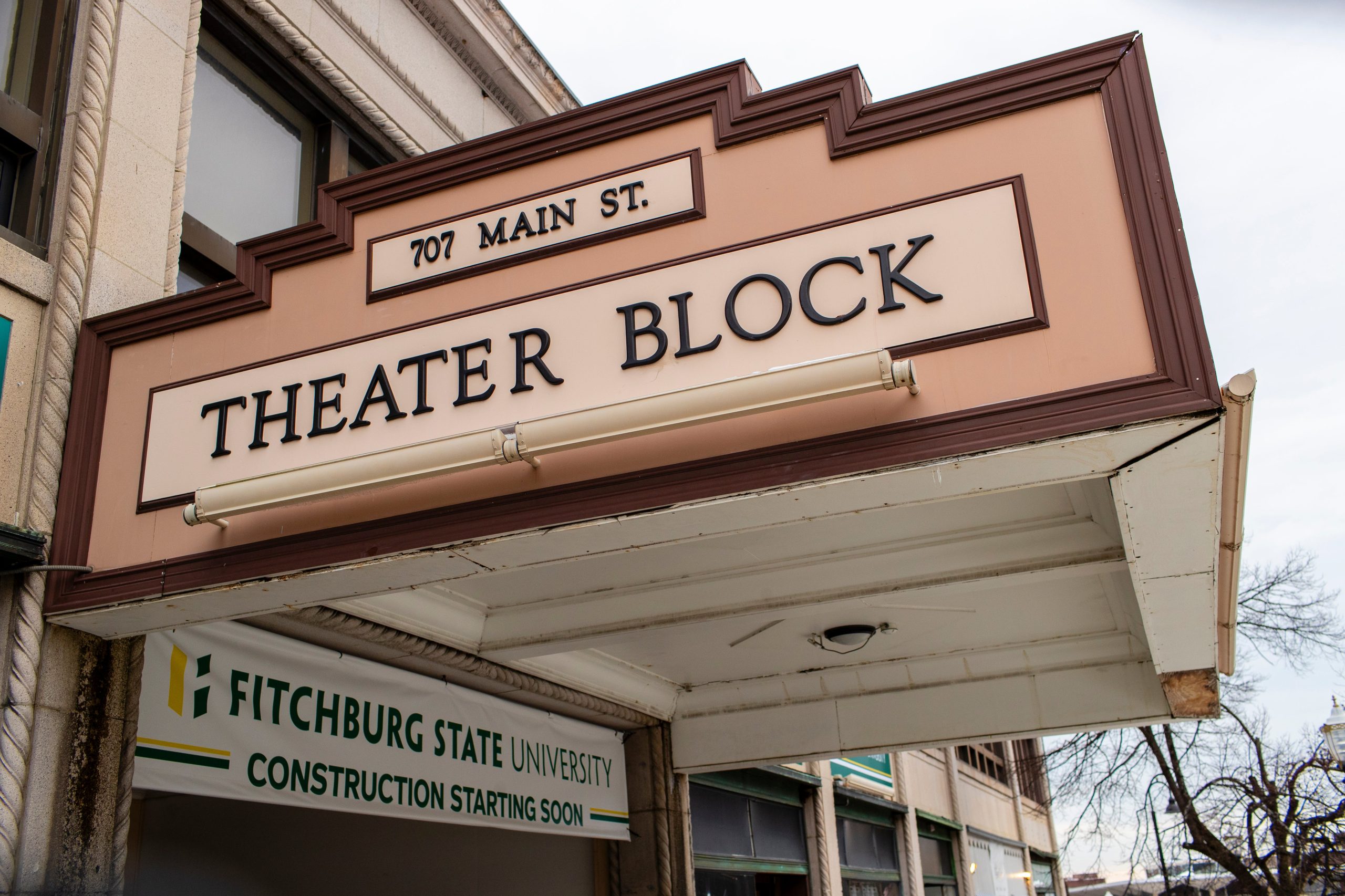
“The volume of new residential and commercial development downtown bodes well for this parcel, with its prime location, to be part of the city’s renewal,” Hodge wrote. “We’re moving quickly today, and the theater block and downtown partnership remain one of my top priorities as a new president.”
While the theater awaits its next act, its storefronts include art gallery space and The Pauper’s Pantry restaurant.
Housing and hotels
Hoping to create a haven for artists seeking reasonable rents, the under-construction Fitchburg Arts Community at 62-82 Academy St. seeks to turn a former horse stable and two former public school buildings into 68 artist lofts with gallery and performances spaces.
The project is being led by Fitchburg-based community development corporation NewVue Communities and is expected to be completed later this year. Funding is coming from a mix of public and private sources.
“The City is doing everything we possibly can to incentivize housing development in downtown.,” said Liz Murphy, executive director of community development & planning for the City, mentioning the availability of funding through the state’s Gateway City-focused Housing Development Incentive Program. “We have a great relationship with Sen. [John] Cronin and Rep. [Michael] Kushmerek, and when they can they have been getting earmarks for us specifically for housing downtown.”
The good relationship with the region’s statehouse representation is key to revitalization efforts, said Meagen Donoghue, executive director of the Fitchburg Redevelopment Authority.
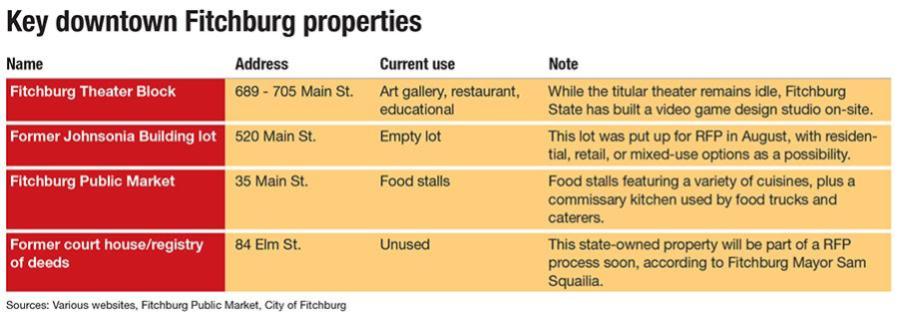
“We’ve been able to bridge the gap to make housing happen in these very unique buildings,” said Donoghue.
Housing units are on tap for several of Downtown Fitchburg’s other older buildings, including eight residential units planned for the 148-year-old brick building at 347-355 Main St., which is set to be the site of Power Surge Bar Arcade this spring.
“The key is renovating the existing structures,” Squailia said. “That's where you're also going to see the most value for your dollar when you renovate rather than to build new. Our historical architecture really draws a lot of people, and it's a real amenity for people wanting to come here and live here.”
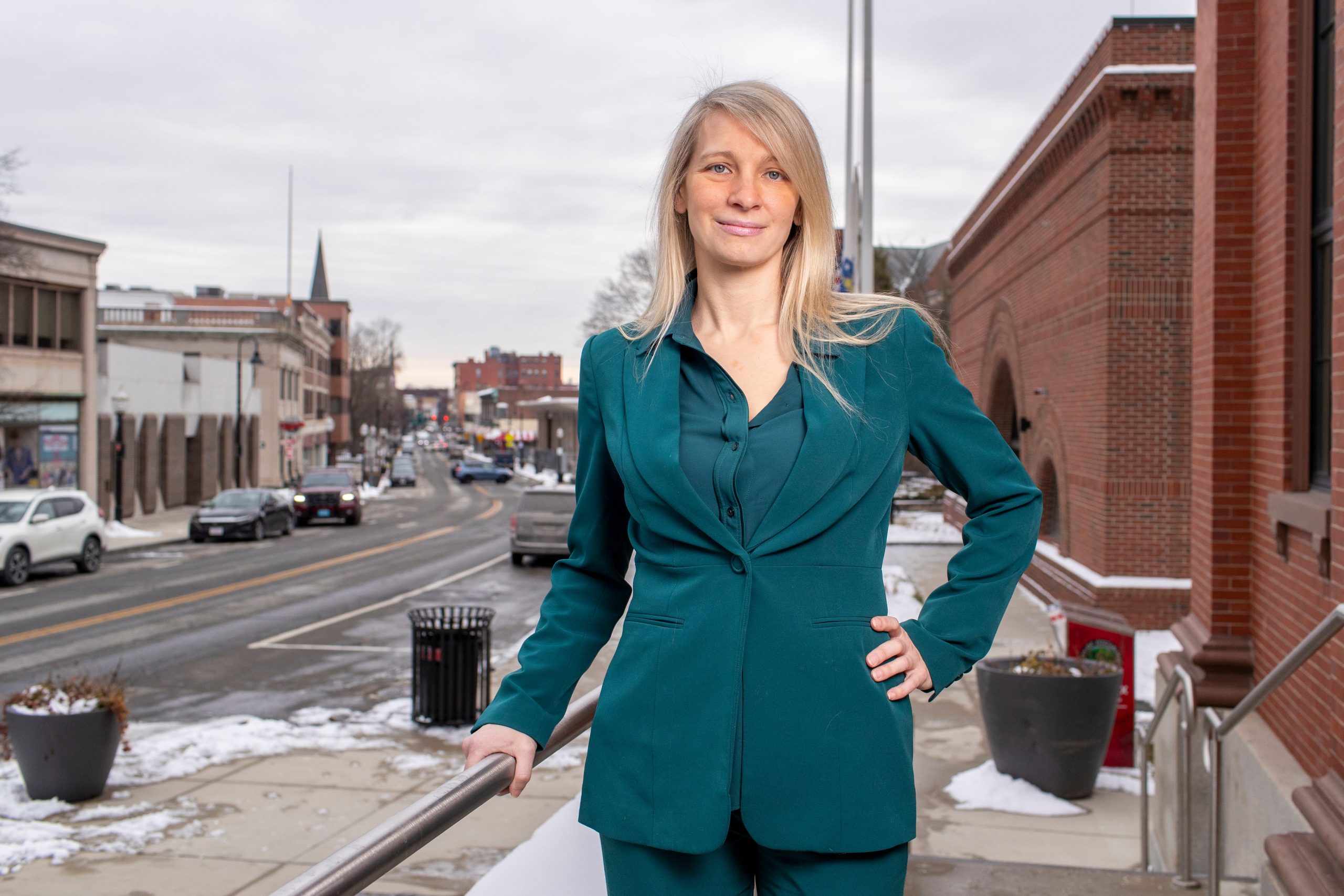
Another boost would be a boutique hotel. Existing hospitality options in the area are mostly limited to the Great Wolf Lodge Water Park, a 406-unit family-focused resort. Great Wolf is about five miles away from the downtown area and isn’t quite the right fit for parents visiting students at Fitchburg State or those looking to do business in the city.
Squailia said a boutique hotel would be a good next step for downtown.
South American twist on cheeseburgers
One example of a business contributing to the rejuvenation of downtown is Fitchburg Public Market.
A project of the Worcester Regional Food Hub, the market is designed in a similar vein to the public market in Worcester’s Canal District and other similar establishments in cities around the country. The market is fully-occupied with eight food stalls, many highlighting cuisine from the region’s immigrant communities.
These include La Colombiana Hamburger, featuring South American twists on the classic cheeseburger or hotdog, and El Friquitin De Jenny, a stall specializing in Puerto Rican street food.
The establishment has fit in well in changing Downtown Fitchburg, said market Manager Kim Gordon.
“Fitchburg and the Main Street area were very inspirational to the project from the very beginning, because it seemed like a place where small businesses could really take off and grow and expand,” Gordon said. “There's obviously several buildings that could still use some rehabilitation, but it's a really beautiful Main Street corridor.”
While she would be sad to see some of the existing tenants leave for their own Downtown Fitchburg restaurant spaces, Gordon understands that’s part of the appeal of the public market.
“At some point several of them will be abandoning us for their own brick and mortars because they're already just thriving and being so successful,” she said. ”So that is a long-term goal.”
Rebuilding after the fire
One event Fitchburg’s original downtown revitalization plan in 2001 couldn’t predict was the 2011 Johnsonia Building fire. Constructed as a hotel and office building in 1897, it featured condominiums when the fire destroyed it.
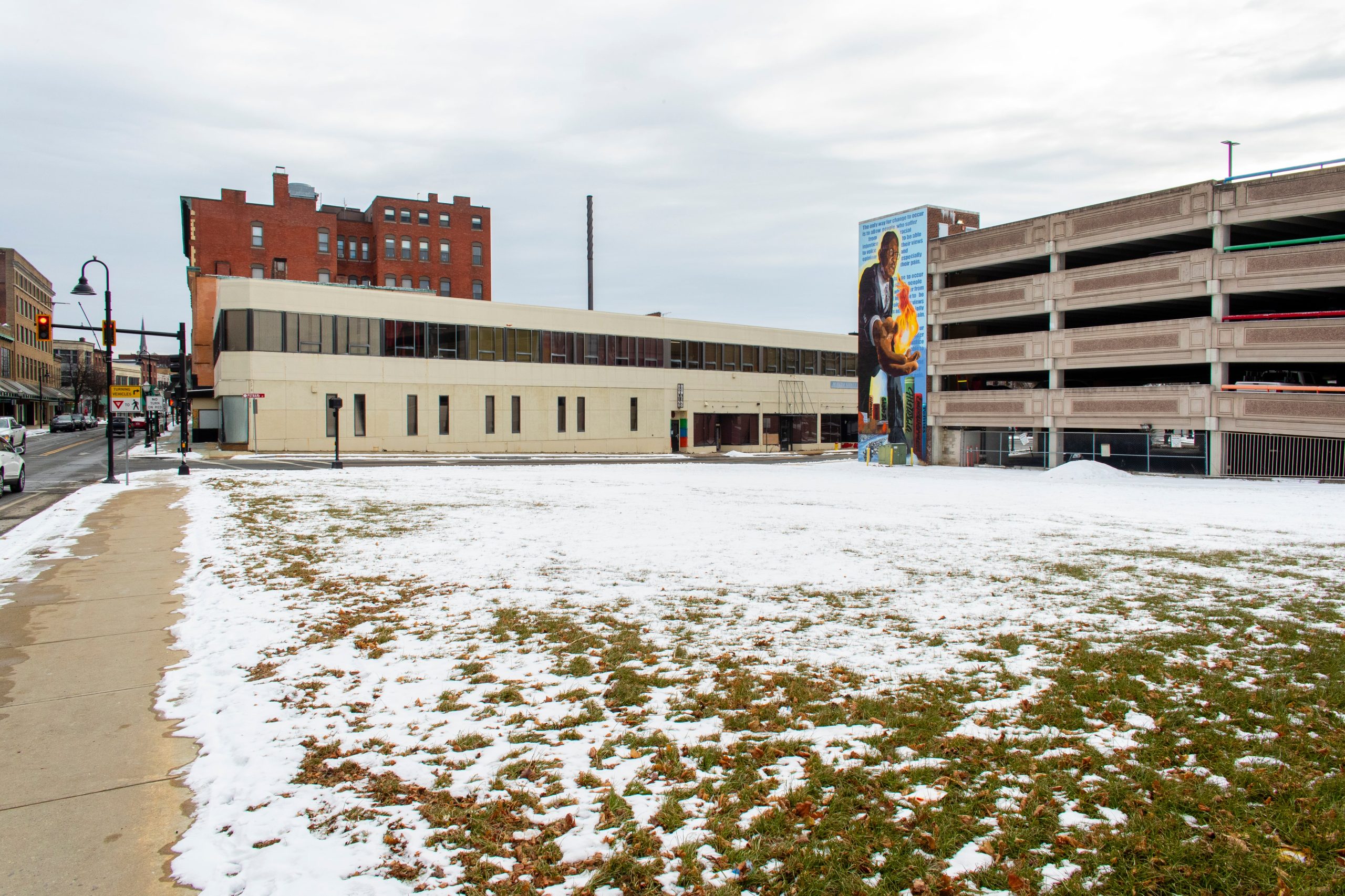
The since-vacant 15,651-square-foot lot at 520 Main St. was purchased by the Fitchburg Redevelopment Authority in 2021. The FRA is in the final stages of reviewing proposals for the lot.
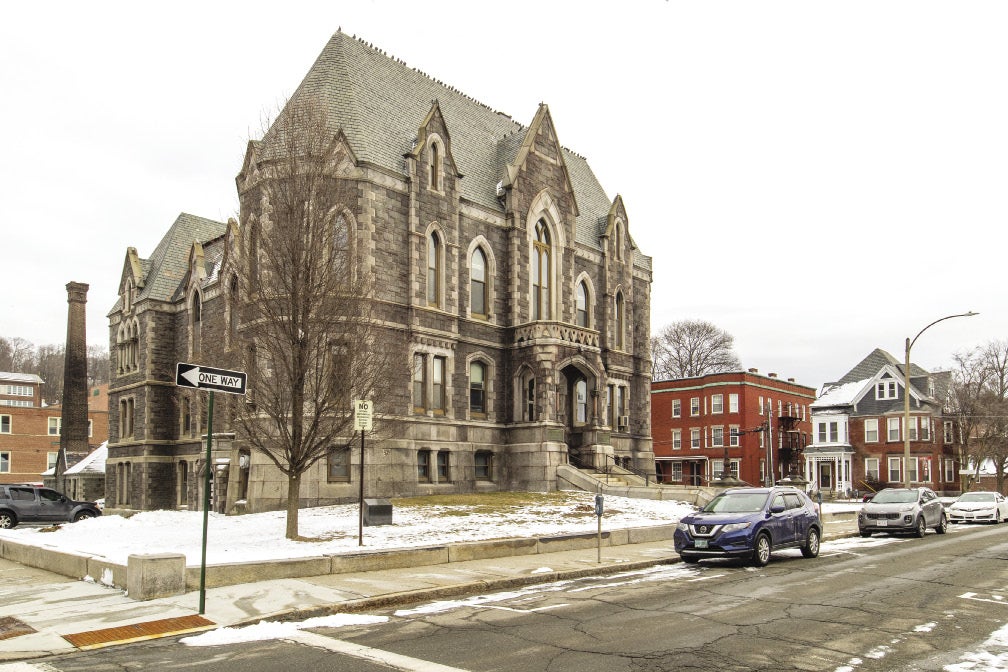
Next up for the RFP process may be the former courthouse and registry of deeds building at 84 Elm St. A gothic-style building dating back to the 1870s, the City is waiting for approval to put the state-owned building up for redevelopment. Developers have already expressed interest in the property, said Squailia, with some hope the building could end up as a boutique hotel.
Another milestone to look forward to will be the connection of downtown with the Twin Cities Rail Trail, a bike path set to connect Fitchburg with the downtown of its twin city of Leominster. With construction starting in the spring and expected to take two years, the pedestrian and rail bridge over the Nashua River is the final piece of that puzzle and will be the state’s longest pedestrian bridge when completed.
Eric Casey is the managing editor at Worcester Business Journal, who primarily covers the manufacturing and real estate industries.
